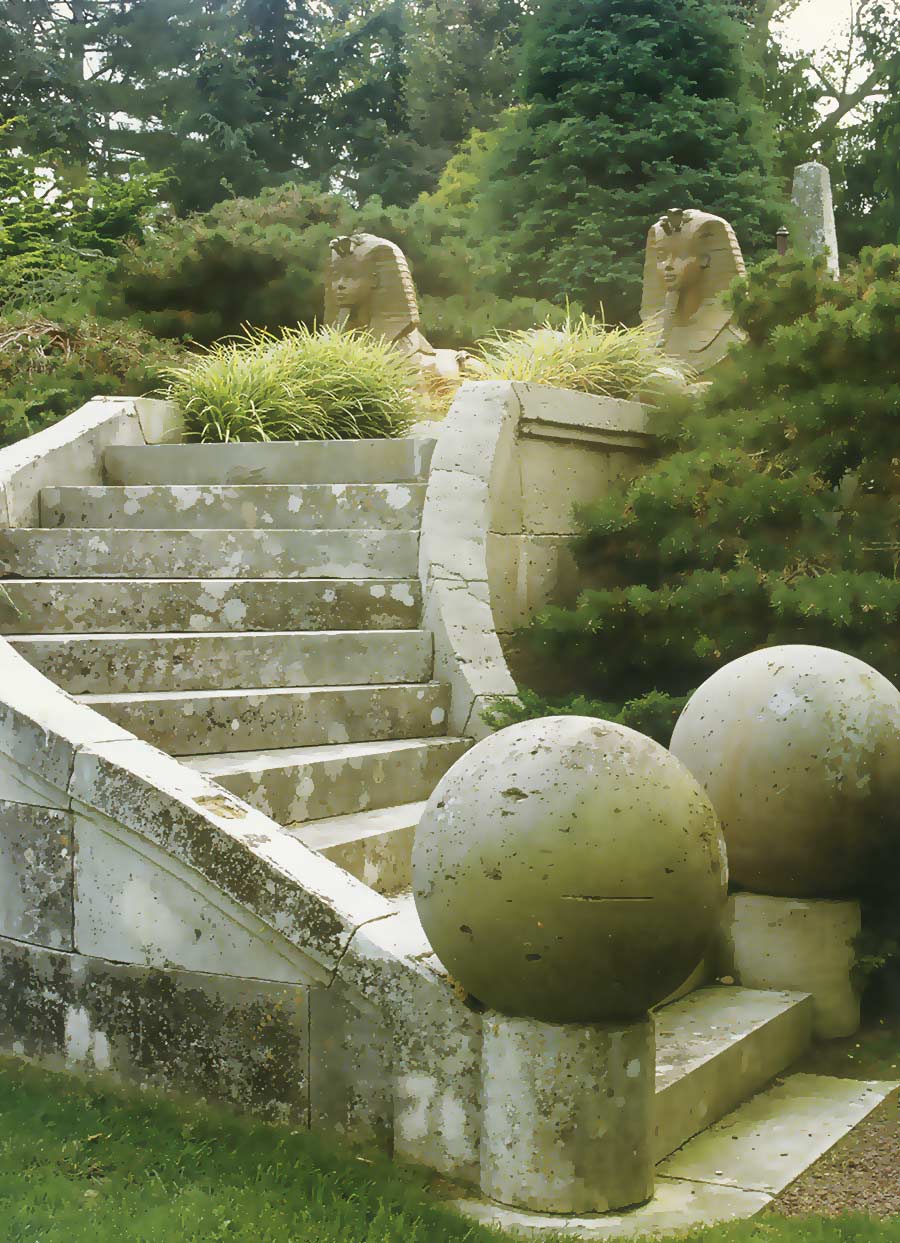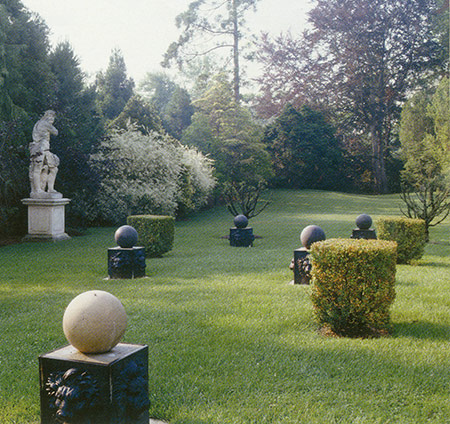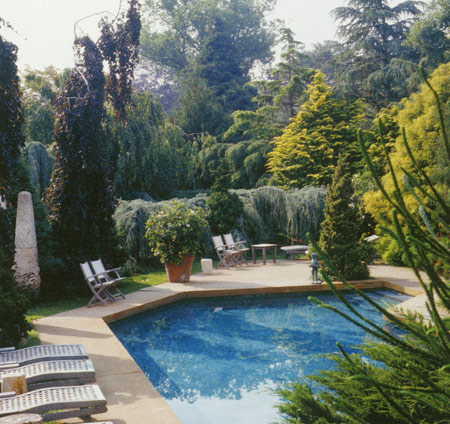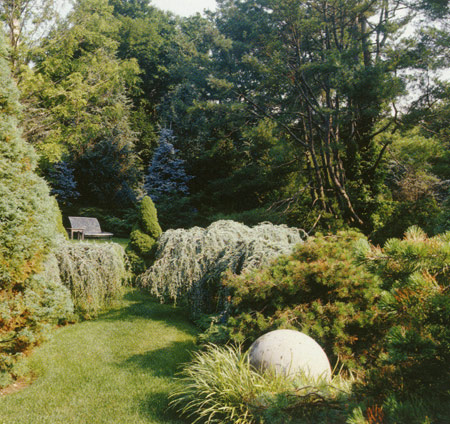Enchanted Forest
A Hamptons Haven of Heart-stopping Beauty
Just a stone’s throw from the heart of East Hampton Village, you can stand on the rolling green of the property of Tony Ingrao and Randy Kemper and imagine you are in the lushest English countryside, far from the maddening crowds. You won’t hear the drone of Main Street traffic or see any of the eminent Historic District neighbors. Instead, you revel in a Sherwoodian forest of towering trees, interspersed with verdant lawns, pergolas, obelisks and follies.
This parcel was originally part of the legendary Mrs.Woodhouse’s 35-acre parkland, and the Tudor-ish house was converted many years ago from a four-car garage, silver vault and garden shed. Purchasing the three-plus acre property in 2003, the owners immediately moved the driveway over by 30 feet, swerving it away from their front door. Last year they had the opportunity to expand their holdings by an extra 1.5 acres, creating a whole new entrance-drive through a gracious flat of greenery and lining it with truck-ins of even more gargantuan trees. They worked closely with landscaper Charlie Marder, scouting locally for mature native specimens, often saving them at the last minute from being bulldozed by developers at tear-down sites.
Fervent pursuers of all things fashionable, Tony Ingrao and Randy Kemper have traveled extensively, importing hefty items that most people would find daunting. Peering at visitors along the long dark-red driveway are colossal Baroque stone statues representing four of the deadly sins: Avarice, Vanity, Greed and Gluttony, shipped from the Czech Republic. Highlighting the turnaround is an immense symmetrical European beech, barged from nearby Rhode Island, that looks as stunning when bare in winter as it is in full foliage. The monumental stone stairway up to the pool hillock was found outside of Paris, where a medieval castle was being dismantled. Six larger-than-life Egyptian guards (bordering on kitsch) were czar’s treasures, crated in from Russia, and two kneeling Nubians, cradling an armillary and sundial, are 17th century Dutch, transplanted from England.


Ingrao and Kemper are respectful of the past and compulsive about correct restoration. They’ve reverently named their spread “Woodhouse Park” and did research to find genuine 100-year-old rhododendrons to replace the many dead bushes along the perimeter. They installed a sunken garden in a matter of days, due to a deadline for one of their oft-generous charity openings. With its high wall of handmade bricks, mammoth bronze lions surveying from pedestals, cornucopias holding mercury balls, whimsical topiary elephants, tightly meshed boxwood squares and a lavish central fountain, the compact formal garden looked instantly at home, combining fine classic order with a profuse elegance.
For tree lovers, this place is paradisical eye-candy, with careful layerings of shapes, colors and textures-a kind of mini-Central Park fused with a Garden of Eden, done with a decorator’s eye. You need to look at the perspective: amber leaves stand out against crimson; pale against dark; others, drooping or swirling or frizzy or buttery. They’ve ratcheted up the atmosphere with odd-shaped evergreens: Mahonia (holly-like) hedges, Hinoki cypresses, oversized weeping hemlocks, shaven yews, punctuated by spindly Monkey Puzzle trees. The visual experience is similar to the one written up by the poet, Chris Wallace-Crabbe: “…we wander though Botanic Gardens negotiating them by metaphor. Names for these shapes? Why, anthropoid, globulous, falgate, serrulated, drab, robust, rupestral, pyramidal, plumb and acutifoil.”
There are no real paths to lead you or forced focal points, letting the wanderer enjoy a sense of discovery. Bereft of gaudy flowers, this garden offers a sense of sunstruck peacefulness. In planning this space, a primary consideration was to “sculpt the land to make the best use of the views.” Since the nearby nature trail is low and unimpeded, the area around the house was also carefully planted “low” so that no windows are blocked, leaving abundant openings to the sky.
Where did this obsessive largesse come from? Both men have familial roots in gardening, role models that have shaped their tastes and honed their talents. Kemper’s aunt was an ardent gardener in Rhinebeck, N.Y. who taught him basic principles of design and proper planting. Ingrao also learned from a master—his godmother Nicole de Vesian. A fashion designer at Hermes Paris who retired to Provence, she became a professional landscape artist known for her minimalist tapestries of mixed shrubs.
This small estate has it all: endless textures, dappled lights, solemn geometry, cloaks of colors, the heavy breath of sensuality; all in all, a Hamptons haven of heart-stopping beauty.
By Lys A. Marigold
Photographs by John M. Hall (unless otherwise noted)






Back to Press
